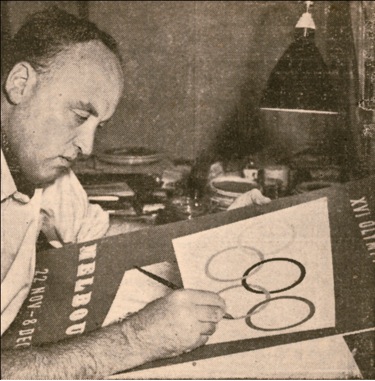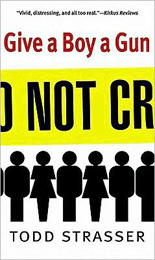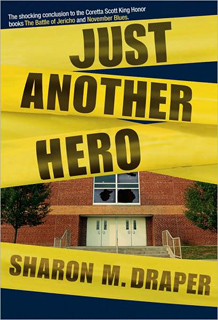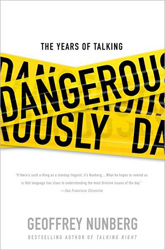Today we walked among snow-encrusted trees at Maudslay State Park and an idea came to me. Now that I have drawn it, let me explain. Symbols can be powerful. Consider Gerald Holtom’s peace symbol, which he designed for the Direct Action Committee against Nuclear War in the fifties. It is now widely used and is […]
Add a CommentViewing: Blog Posts Tagged with: symbols, Most Recent at Top [Help]
Results 1 - 11 of 11
Blog: Constructions: joyce audy zarins (Login to Add to MyJacketFlap)
JacketFlap tags: female power symbol, life in general, Hilary Clinton, the world, symbols, creative living, pearls of wisdom, Add a tag
Blog: An Awfully Big Blog Adventure (Login to Add to MyJacketFlap)
JacketFlap tags: events, Dreams, psychology, meaning, symbols, metaphors, Heather Dyer, Elinor, the flying bedroom, Add a tag
"Yes," I said, self-consciously. "I know."
Blog: OUPblog (Login to Add to MyJacketFlap)
JacketFlap tags: design, art, fashion, olympics, graphic design, Architecture, symbols, Olympic Games, Summer Olympics, Editor's Picks, *Featured, ceremony, Art & Architecture, Arts & Leisure, london 2012, Design Histories of the Olympic Games, Jilly Traganou, Journal of Design History, modernity, Pierre De Couberti, Wolff Olins, Add a tag
By Jilly Traganou
After attending the “Because” event at the Wolff Olins office on July 4th, I was once again reminded of the big disconnect that lies between designers and their public. Wolff Olins is the firm that designed the London 2012 brand, a multifaceted design campaign that included much more than the London 2012 logo. Readers may remember the numerous complaints that the logo generated. As my research revealed, this was caused partly due to International Olympic Committee (IOC)’s restrictions and the corporate unwillingness to allow for the full application of what might be seen as a “no logo” campaign.
Wolff Olins proposed an open-source framework that would integrate the public by providing a design language that could be shaped into new forms and messages. The designers’ intention was to “hand over some tools that would allow people to make everything they wanted.” Design would be “off the podium, onto the streets.” But neither the public nor the broader designers’ community were ready to accept that the Wolff Olins team showed no compliance to the usual set of corporate instruction and that what they were trying to achieve lied beyond the creation of beautiful forms.

London 2012 event. Photo by Gary Etchell. Used with permission. All rights reserved. http://www.flickr.com/photos/gary8345/557769058/
The designers’ goal was to evoke an effect similar to that of the Mexico 1968 design: a visual language designed by Lance Wyman that was not only appropriated by the counter-Olympic movement, but also marked future visual languages developed by local designers in Mexico. In a way, Wolff Olins’ design succeeded in its adaptability, even though its multiple viral deconstructed versions that appeared on the streets and online were meant to primarily express conspiracy and protest, or even a disdain for the very visual language that the designers provided (and which these “dissidents” are now using).
But why would designers today strive for openness and participation? And why should IOC, London Organising Committee of the Olympic and Paralympic Games (LOCOG), or the general public be indifferent or even hostile to these intentions? After all, are there any designs that would meet the aspirations of all stakeholders: Olympic organizers, designers, and their multiple publics? The Olympics, as indeed most public events, are complex platforms that bring to the surface deep social conflicts and generate heated debates about the notion of public good. The new temporary or permanent configurations that are designed for the Olympics express these tensions and often become the targets of opposing voices.
Everyone today recognizes that the modern Olympics only partly concern sports. Few, though, are aware of the multiplicity of the design engagements that are mobilized for their realization. Being characterized as something between urban festivals and quasi-religious events, the Olympics have a strong ceremonial character that design generates. Hundreds of designers are mobilized to create a series of objects (logos, posters, uniforms, mascots, souvenirs) that are indispensable for the Olympic ensemble. This may seem to some a contemporary distortion to the original 19th century idea of the modern Olympics’ founder, Pierre De Coubertin, but Coubertin was keenly aware of the importance of design for the identity of the Games. He designed what has been credited as the most recognizable logo in the word, the Olympic rings, and spent considerable energy in prescribing the ceremonial characteristics of the event, with writings on subjects that ranged from attention to lighting and decoration, to specifications on the architecture of the venues.

Photograph in newspaper (unspecified) of Richard Beck working on the design for the Olympic poster. This proto-version differs from the final design, particularly in its typography. Collection: Powerhouse Museum, Sydney, 92/1256–1/4. Used with permission.
As it has become only too obvious with the current case of London, in late modernity the Olympics are also an opportunity for new infrastructure projects and major real estate enterprise, which leave a debatable legacy to the host-city. Planners, architects, and urbanists play a major role in this process, as well as those who sponsor, lease, or invest in the projects in the longue durée of the post-Olympic era. The design for the Mexico 1968 Olympics had significant ideological implications for the social segregation that marked the future of Mexico City. The architecture of the Athens 2004 Olympics is emblematic of ‘instant monumentality’ and a lack of legacy planning that has characterized many modern Olympics.
At the same time, the high visibility, budget, and scale of the Olympics have provided designers with opportunities to realize ambitions that are not possible through ordinary projects, and to envision ideas that are often too advanced for their times. Katsumi Masaru for instance insisted in compiling a design manual for the Tokyo 1964 Olympic Games (a set of prescriptions that would secure the unified application of the graphics, and thus a cohesive Olympic image), even though he knew too well that it could hardly be applied in the Tokyo Olympics per se. Indeed it was completed just before the start of the Games leaving nevertheless an important legacy for all forthcoming Olympics for which a design manual became a staple. Should we similarly expect that the “no logo” idea of the London 2012, with its openness and lack of corporate compliance, is signaling a new paradigm shift?
Jilly Traganou is Associate Professor in Spatial Design Studies at the School of Art and Design History and Theory, at Parsons The New School for Design in New York. She has published widely in academic journals, has authored The Tokaido Road: Traveling and Representation in Edo and Meiji Japan (Routledge, 2003) and co-edited Travel, Space, Architecture (Ashgate, 2009). She is currently working on a new book Designing the Olympics: (post-) National Identity in the Age of Globalization. Traganou has recently edited a special issue titled “Design Histories of the Olympic Games” for the Journal of Design History, where she also serves as Reviews Editor.
The new issue of the Journal of Design History titled “Design Histories of the Olympic Games” introduces the Olympics as a multifaceted design operation that generates diverse, often conflicting, agendas. Who creates the rhetorical framework of the Olympics, and how is this expressed or reshaped by design? What kind of ambitions do designers realize through their engagement with the Olympics? What overall purposes do the Olympics and their designs serve? ‘The Design Histories of the Olympic Games’ brings together writings by a new generation of scholars that cross the boundaries between traditional disciplines and domains of knowledge. Some of the articles look at the role of Olympic design (fashion design and graphic design) in representing national identity. Other articles look at the interconnected area of architecture, urbanism and infrastructure and the permanent legacy that these leave to the host city. You can view more on the Journal of Design History’s Design Histories of the Olympic Games Pinterest board too.
Subscribe to the OUPblog via email or RSS.
Subscribe to only art and architecture articles on the OUPblog via email or RSS.
Read more blog posts about the London 2012 Summer Olympic Games.
Blog: Jacket Whys (Login to Add to MyJacketFlap)
JacketFlap tags: color, book covers, symbols, book spines, Add a tag
Crime tape seems to me like a perfect graphic image, and it’s surprising that it’s not used more often. The book covers below are the only ones I could track down, and three of the first four are from Simon & Schuster. Usually when I’ve put together a group like this, I find that all are from different publishers. So this is an unsual grouping on that count.
Give a Boy a Gun by Todd Strasser (Simon & Schuster 2000) and Shooter by Walter Dean Myers (Amistad 2004) are similar in the orientation of the crime tape and the colors used. With these two, the crime tape says what crime tape usually says, and the title is separate. Both used red to make the title stand out.


The Year of the Bomb by Ronald Kidd and Just Another Hero by Sharon M. Draper are both new this year and both from Simon & Schuster. These differ from the above two in that the title text is what appears on the tape.
People have talked about great book spines, and I’ve included the spines here, because they are really striking. I’ve had these two books sitting on a cart of books in my office, and my eye is drawn to them over and over again.
![]()

![]()

Three of the above are about guns brought to school. The image makes sense for the subject.
I just have to add a peak at this adult title, The Years of Talking Dangerously by Geoffrey Nunberg (PublicAffairs 2009). Unlike the titles above, this is about language, not crime.

Give a Boy a Gun: Events leading up to a night of terror at a high school dance are told from the point of view of various people involved. Ages . Reviews 1, 2, 3, 4.
Shooter: Written in the form of interviews, reports, and journal entries, the story of three troubled teenagers ends in a tragic school shooting. Ages . Reviews 1, 2, 3,
Year of the Bomb: In 1955 California, as “Invasion of the Body Snatchers” is filmed in their hometown, thirteen-year-old Arnie discovers a real enemy when he and three friends go against a young government agent determined to find communists at a neaby university or on the movie set. Jacket design by Lucy Ruth Cummins. Jacket illustrations by Matthew Laznicka. Ages 12+.
Just Another Hero: As Kofi, Arielle, Dana, November, and Jericho face personal challenges during their last year of high school, a misunderstood student brings a gun to class and demands to be taken seriously. Jacket design by Sonia Chaghatzbanian. Jacket photographs by Getty Images. Ages 12+. Reviews 1, 2.
Years of Talking Dangerously: Adult. Reviews 1, 2.

Blog: Sugar Frosted Goodness (Login to Add to MyJacketFlap)
JacketFlap tags: tindaisies, Gabrielle, symbols, Drawing Day, Add a tag

I took the sentence which is the title of this post, divided the words and arranged them into chunks until each chunk had no meaning. Then I thought about what the combinations of letters represented to me and drew them. I also imagined what Palomia would be like. By the way, Palomia only exists in my imagination, similar to wanting to have "Breakfast at Tiffany’s."
I was happy with the result because it looks like Palomia is an actual, exotic place that I would like to visit. I wonder what breakfast in Polomia would be like.
Blog: Jacket Whys (Login to Add to MyJacketFlap)
JacketFlap tags: color, shapes, book covers, symbols, fonts, Add a tag
I wanted to say Catching Fire Catches Fire. But Publisher’s Weekly already said that…
At BEA Friday, the ARCs were hard to come by, but I was lucky. I’m taking a break at the moment, a third of the way through this book which has, so far proved worth the buzz… YES, you gotta read this! (Yesterday!)
My purpose here, however, is to talk about the covers, not what’s between the them.


I loved the cover of Suzanne Collins‘ The Hunger Games (Scholastic 2008). It isn’t drastically different from the crowd, but it embraces a few of the conventions I’ve noted. Most particularly what I pointed out a couple of months ago in my post about what Liza Gilbert’s teens liked. “A real focal object, and a mysterious atmospheric quality. Mostly good type treatment… Good hooks.”
The Hunger Games: Focal object? CHECK. Mysterious atmospheric quality? You could say that. CHECK. Type treatment? Yeah – looks very futuristic. Probably a good hook. CHECK.
The way I interpret book #1’s jacket, which is to say, I think it fits the story (another CHECK), is this: There’s darkness in the land. Each circle marks one of the 12 districts (here linked, but with walls? blocking the links?). And there’s hope. A golden mockingjay pin marks the spot.
And here’s Catching Fire (Scholastic, 9/2009). Some brightness radiating out, with more light coming from District 12. No walls. The arrow has disappeared. Does that mean something?
And… what’s that? The mockingjay has come alive! Here’s another assessment of the symbols.
I love this cover, and I hope Scholastic sticks with this for the paperbacks (I beg you, Scholastic, do not put people on the paperback issues). I strongly dislike the UK (Australian?) Hunger Games cover. I’m not at all convinced that making the book look like 90% of the other books out there will hook readers. Here’s hoping that they stick with BUZZ and a great matching cover for the third book.
If you’re not as convinced as I am that this was a good choice, what do you think of the UK cover of Catching Fire? And do they really need Stephenie Meyer’s name to boost sales? (Caveat: Amazon UK shows the U.S. cover so I’m not sure this is what they’re really releasing?).
Don’t miss this article at Publisher’s Weekly that flashes Hunger Games book jackets from around the globe.
Hunger Games: In a future North America, where the rulers of Panem maintain control through an annual televised survival competition pitting young people from each of the twelve districts against one another, sixteen-year-old Katniss’s skills are put to the test when she voluntarily takes her younger sister’s place. (CIP) Ages 12+. Reviews: 1, 2, 3, 4, 5. Trailer. Videos of Collins talking about the Hunger Games.
Catching Fire: By winning the annual Hunger Games, District 12 tributes Katniss Everdeen and Peeta Mellark have secured a life of safety and plenty for themselves and their families, but because they won by defying the rules, they unwittingly become the faces of an impending rebellion. (CIP) Ages 12+. Reviews: 1, 2.

Blog: Jacket Whys (Login to Add to MyJacketFlap)
JacketFlap tags: color, book covers, symbols, Add a tag
Here is a set of book covers that do not all look alike, but share a similar aspect. Clearly conveyed is the concept of one in a crowd, someone who stands out, outsider-ness. What buttons, or hearts (candy?) or butterflies have to do with any of it isn’t clear from the CIP summaries. But the outsider concept is clear. The cover for The Opposite of Love by Helen Benedict (Viking 2007) grabbed me the first time I saw it and has always sat in my queue waiting for others to join it. Slowly I’ve gathered enough to share – L. A. Candy by Lauren Conrad (HarperCollins 2009), When the Black Girl Sings by Bil Wright (Simon & Schuster 2008) and Fearless by Tim Lott (Candlewick 2007).




Opposite of Love: When seventeen-year-old Madge, a bi-racial girl living in a small Pennsylvania town populated by bigots, decides to change the world for the better, she starts by “adopting” a four-year-old boy she finds abandoned in New York City. Ages . Reviews: 1,
L.A. Candy: When nineteen-year-old Jane Roberts is cast in a new reality show, she discovers that the fame and fortune of her new life come at a high price to herself and her friendships.
When the Black Girl Sings: Adopted by white parents and sent to an exclusive Connecticut girls’ school where she is the only black student, fourteen-year-old Lahni Schuler feels like an outcast, particularly when her parents separate, but after attending a local church where she hears gospel music for the first time, she finds her voice.
Fearless: In the future, girls labeled “juvies” or “mindcrips” are taken from their families and sent to the prison-like City Community Faith School, but Little Fearless decides to break out, and embarks on a dangerous mission to try to free the girls from their miserable captivity.

Blog: Sugar Frosted Goodness (Login to Add to MyJacketFlap)
JacketFlap tags: icons, metin seven, sevensheaven, Signs, pictograms, symbols, Add a tag
![]()
Graphic 2D symbols that express security services, used as prints on a company car.
I love creating 2D graphics like these, next to my 3D work.
More at Sevensheaven.nl
Blog: Jacket Whys (Login to Add to MyJacketFlap)
JacketFlap tags: book covers, symbols, stock photos, Add a tag
It’s always interesting how the same basic image can be used for books with totally different plots. Here Reincarnation by Suzanne Weyn (Scholastic, 2008) is fantasy - a romance with a prehistoric beginning. Crush by Carrie Mac (Orca, 2006) deals with issues around sexual orientation (the two about to kiss are both girls). Kiss Me Kill Me by Lauren Henderson (Delacorte, 2008) is a murder mystery, and A Bad Boy Can Be Good for a Girl by Tanya Lee Stone (Wendy Lamb, 2006) is realistic fiction (the title’s a very short plot summary?).
All eyes are closed - except the guy on A Bad Boy. Fitting, probably, when you read the plot summary. I like the halo effect outlining the two faces on Reincarnation, and it helps give the impression of fantasy. Lots of light on Crush makes me think these girls may have their first kiss in the spotlight. Perhaps that fits?
And then there’s Torched by April Henry (Putnam’s) coming out in March of 2009, which combines the kiss with fire.
I would think that the pre- (or post?) kiss image would draw teen girls. How does it do with boys?
UPDATE: Come in from the Cold by Marsha Qualey (Houghton Mifflin 1994 - this paperback edition Graphia 2008) - thanks to Laurie (comments).
Reincarnation: When a young couple dies in prehistoric times, their love–and link to various green stones–endures through the ages as they are reborn into new bodies and somehow find a way to connect.
Kiss Me Kill Me: Longing to be part of the in-crowd at her exclusive London school, orphaned, sixteen-year-old Scarlett, a trained gymnast, eagerly accepts an invitation to a party whose disastrous outcome changes her life forever.
Crush: During a summer in New York, Hope falls in love with another girl and must decide whether she is gay.
Bad Boy: Josie, Nicolette, and Aviva all get mixed up with a senior boy who can talk them into doing almost anything he wants. In a blur of high school hormones and personal doubt, each girl struggles with how much to give up and what ultimately to keep for herself.
Torched: In order to save her parents from going to jail for possession of marijuana, sixteen-year-old Ellie must help the FBI uncover the intentions of a radical environmental group by going undercover.

Blog: Jacket Whys (Login to Add to MyJacketFlap)
JacketFlap tags: book covers, symbols, Add a tag
Another way a circle is used on fantasy titles is as a frame. On Chalice by Robin McKinley (Putnam’s 2008 ) and Riding the Storm by Salamanda Drake (Scholastic 2008 ), the circular frame doesn’t quite contain the subject within. The woman and the dragon extend into the the space between the frame and the viewer.
On this cover for Runemarks by Joanne Harris (Knopf 2008 - this may not be the jacket used on the final cover) and The Magic Thief by Sarah Prineas (HarperCollins 2008 ), the circular frame is more like a porthole, granting the viewer a peek into the story. The Magic Thief reminds me of something you might see in a Harry Potter film. I almost expect the characters to start moving.
Chalice: A beekeeper by trade, Mirasol’s life changes completely when she is named the new Chalice, the most important advisor to the new Master, a former priest of fire.
Riding the Storm: Breena’s determination to secure a position with the guard flight by qualifying for the Island Championship pits her against her best friend, Cara, and damages the Trustbond she has with her dragon, Moonflight. (Dragonsdale #2)
Runemarks: Maddy Smith, who bears the mysterious mark of a rune on her hand, learns that she is destined to join the gods of Norse mythology and play a role in the fate of the world.
Magic Thief: A young thief is drawn into a life of magic and adventure after picking the pocket of the powerful wizard Nevery Flinglas, who has returned from exile to attempt to reverse the troubling decline of magic in Wellmet City. (The Magic Thief #1)

Blog: Jacket Whys (Login to Add to MyJacketFlap)
JacketFlap tags: book covers, symbols, Add a tag
Okay, okay - that’s a stretch for the second title in Michael Ford’s Spartan Quest series, Birth of a Warrior (Walker 12/2008 ), which is really “historical adventure.” If you ask me, anything about Ancient Greece has to involve some element of fantasy. The Booklist review of the series’ first title, The Fires of Ares, said “although this historical adventure has no fantasy elements, Lysander follows a path familiar to fans of Harry Potter and Orson Scott Card’s Ender’s Game,” so there you have it. There’s even a “mythical amulet” - portrayed on the jacket of Fires of Ares. Both books thus far have the floating circle and landscape background.
The rest of these are fantasy and every title here is part of a series. What is it about fantasy that begs to be represented by some circular graphic? I don’t think they are all amulets…
Ruler of the Realm by Herbie Brennan (Bloomsbury 2006) is the third title in the Faerie Wars Chronicles. This, the paperback jacket, is the only one with a circle on it. The original cover had a crystal flower on it, which made sense (from reviews I read - must fess up to being not much of a fantasy reader, and I’ve never read any of this popular series). With this new series branding, each book has a different item featured, but the same general composition - something hovering against a landscapey background - though each has a different overall background color. I’m guessing that both of these titles are designed by the same designer… Even the title font is the same - well almost.
In this next group, it is not only the circle/amulet thing - but also a red and gold color scheme that has been used to attract. The Chimera’s Curse by Julia Golding (Marshall Cavendish 2008 ) is the fourth book in the Companions Quartet. The series branding is really obvious here - all four covers look pretty much the same (different colors, different central features).
Day of the Scarab by Catherine Fisher (Greenwillow 2006) is the third title in The Oracle Prophecies Trilogy, and the second to have circle representation (although on The Sphere of Secrets, the circle is a sphere).
I find the texture and design on these last two especially pleasing and intriguing. The Magician by Michael Scott (Delacorte 2008)” is second (of six?) in The Secrets of the Immortal Nicholas Flamel. As in The Companions Quartet, the series branding keeps the jackets looking very similar (see The Alchemyst - Delacorte 2007).
First in “a duology” (Goodman), Eon: Dragoneye Reborn by Alison Goodman (Viking 1/2009) was originally slated for September publication, but postponed so as not to compete (and lose) to Brisingr (September). Along with that postponement, it seems to be pretty difficult to find anything online about this book. It’s mysterious, because while the second book, The Two Pearls of Wisdom, was released in Australia last January, I can’t find the first one at HarperCollins Australia (but see first comment below). I’m a sucker for judging a book by its cover and despite my regular avoidance of fantasy, I’m going to have to read this one. The cover has that thing that pulls me like a magnet. Don’t know what the circular object is, but more than in any of the other books pictured here I want to know.
Birth of a Warrior: When Persians invade Sparta while thirteen-year-old Lysander is training to be a soldier, he finds his loyalties are divided between Spartan honor and the Helot slaves with whom he lived most of his life. (Spartan Quest #2)
Ruler of the Realm: While simultaneously trying to prevent and prepare for war between the Faeries of the Night and Faeries of the Light, Queen Holly Blue is kidnapped from her Uncle Hairstreak’s home by human Henry Atherton and learns she must face another, far greater enemy. (Faerie Wars #3)
Chimera’s Curse: Connie and Col band together to save the world for all creatures, including the mythical ones of which few humans are aware, from the shape-shifter Kullervo’s army and, along the way, Connie finds herself transformed in an amazing way. (Companions Quartet #4)
Day of the Scarab: As she works to return peace to Two Lands, Mirany travels through the Gates of the Underworld. (Oracle Prophecies #3)
Magician: Fifteen-year-old twins Sophie and Josh Newman continue their magical training in Paris with Nicholas Flamel, Scatty, and the Comte de Sant Germaine, pursued by Doctor Dee and the immortal Niccolo Machiavelli. (Secrets of the Immortal Nicholas Flamel #2)
Eon: Sixteen-year-old Eon hopes to become an apprentice to one of the twelve energy dragons of good fortune and learn to be its main interpreter, but to do so will require much, including keeping secret that she is a girl. (Dragoneye #1)























[...] links… Jacket Whys highlights the efficacy of crime tape on YA book [...]